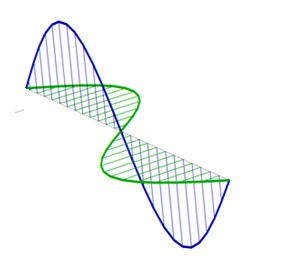Do the $\vec{B}$ and $\vec{E}$ fields have to be orthogonal to each other?
Not really, because aren't really two different fields there. The depiction of two orthogonal waves is not realistic. See section 11.10 of Jackson's Classical Electrodynamics: "one should properly speak of the electromagnetic field Fμν rather than E or B separately". Also see Wikipedia: "the electric and magnetic fields are better thought of as two parts of a greater whole".
Since you can add constants to a solution to Maxwell's equation it doesn't seem necessary from theory.
Agreed.
How would one measure if the $\vec{B}$ and $\vec{E}$ vectors of a light wave are perpendicular?
There aren't really two different and perpendicular vector-field variations. There's just one electromagnetic field variation.
Must $\vec{E}$ and $\vec{B}$ be in phase?
Yes. See the Derivation from electromagnetic theory section of the Wikipedia electromagnetic radiation article:
"Also, E and B far-fields in free space, which as wave solutions depend primarily on these two Maxwell equations, are in-phase with each other. This is guaranteed since the generic wave solution is first order in both space and time, and the curl operator on one side of these equations results in first-order spatial derivatives of the wave solution, while the time-derivative on the other side of the equations, which gives the other field, is first order in time, resulting in the same phase shift for both fields in each mathematical operation."
It's like E is the spatial derivative of the electromagnetic wave, whilst B is the time derivative. To get the gist of this, imagine you're out at sea in a canoe, and a tsunami comes along. As it approaches, your canoe starts to slope upwards, slowly at first, then faster. Then the slope starts to flatten out, and your canoe is momentarily horizontal on the top of the tsunami, then the process is reversed, something like this:

The slope of your canoe denotes E, and the rate of change of slope denotes B. One is the spatial derivative, the other is the time derivative. This is why we have Faraday's law $\vec \nabla \times \vec E = - \frac{\partial \vec B}{\partial t}$. The crucial thing to appreciate is that the curl of E is the rate of change of B. One doesn't cause the other, they're just two aspects of the same thing. For an electromagnetic wave, E and B change together because there's only one wave there. Like I said, the depiction of two orthogonal waves is not realistic.
 Image courtesy of mathematica
Image courtesy of mathematica


